Community Corner: Red Nomster
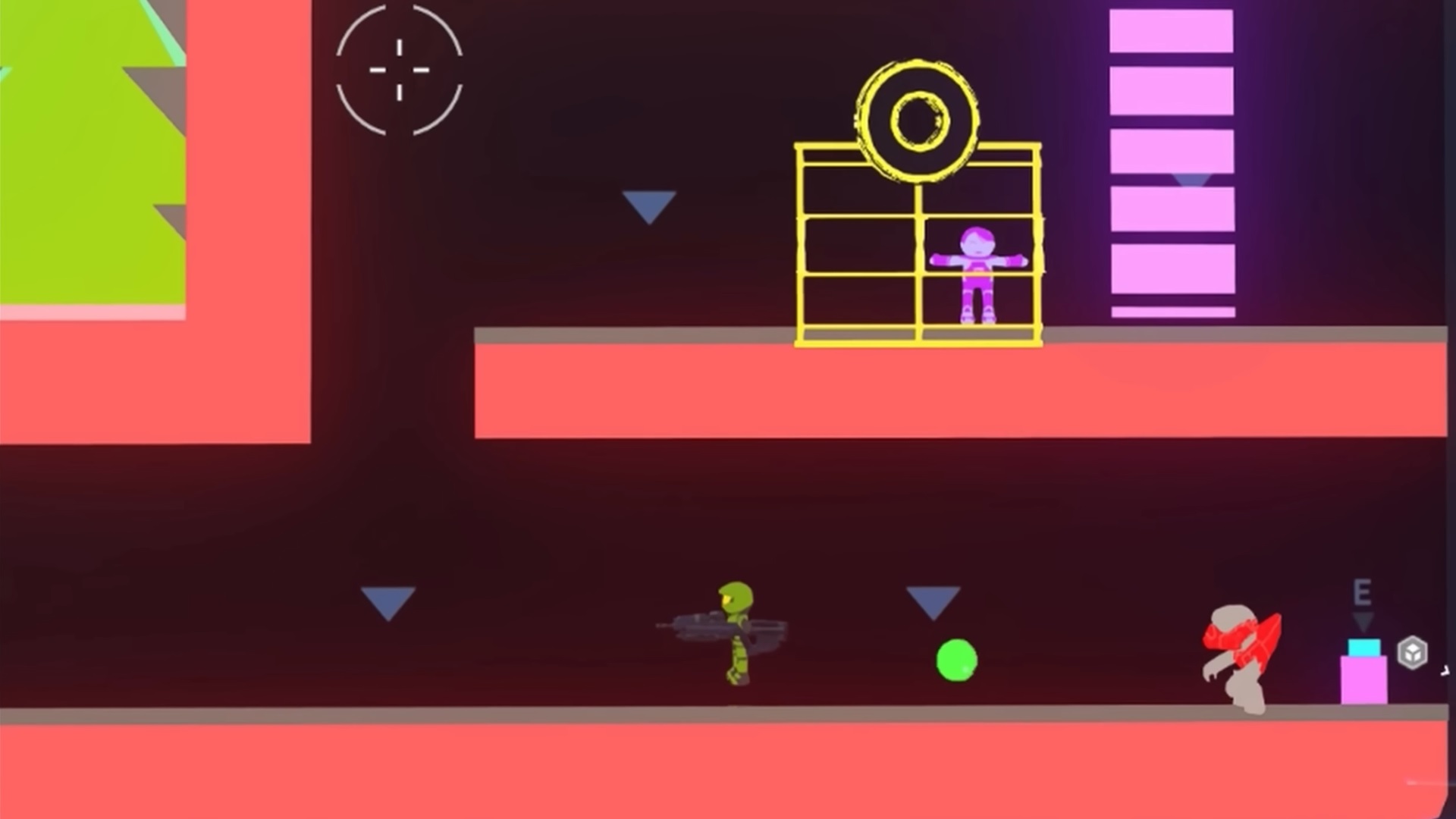
The Community Corner returns!
This is where we spotlight and interview individual members of the Halo community—we chat with them about the cool stuff they do, their personal history with the Halo franchise and universe, and more.
In this issue, we sit down with Red Nomster—lore aficionado and Forge extraordinaire, whose work you have no doubt seen over the last few weeks and months.
Thank you for joining us for the latest issue of the Halo Community Corner, Red Nomster! Tell us a bit about yourself—what do you do as part of the Halo community and where can we find you?
Thanks for having me! My name is RedNomster and you can find me on YouTube and Twitter.
I’m most well-known for my Halo Infinite lore and theory videos, as well as my recent Forge creations—notably the guy who built Toy Story before Forge released, and made a video trilogy investigating the 15-year-old ancient text mystery tying back to the Secret of Sandtrap that resurfaced in Halo Infinite.
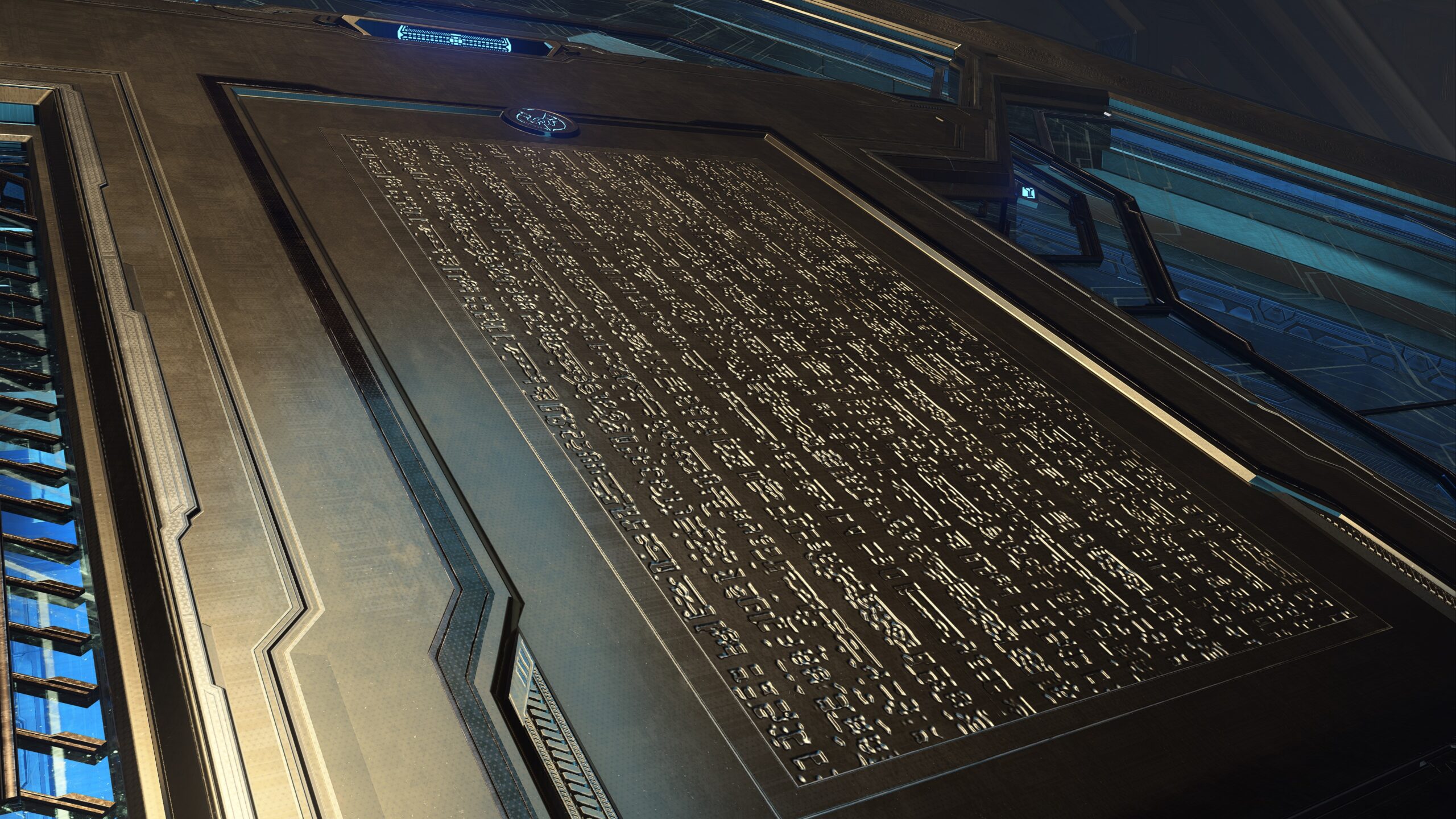
How did your Great Journey with Halo start and what areas of the series did you find yourself gravitating towards?
My journey started with Halo: Combat Evolved. It was mostly casual gaming with my brother and neighbors—up until Halo 3. That’s really where everything changed for me.
What’s your favorite Halo game and why?
Halo 3 (hope I’m allowed to include ODST!)
(You are allowed and encouraged to do so!)
It was so rich with easter eggs, funny glitches, and for the first time, creative outlets. I dabbled in trick jumping, the screenshotting community, and eventually found my way to Halo 3’s Forge mode and the incredibly inspiring custom games the community made.
I was even picked for Bungie Favorites for my screenshot titled “High-Tech,” but Halo: Reach released shortly after and Bungie discontinued Halo 3’s Favorites before it was my turn to appear. My old screenshotting friend “Ash161” remains on Bungie Favorites to this day, twelve years later.
I’m not salty about it. Next question please.
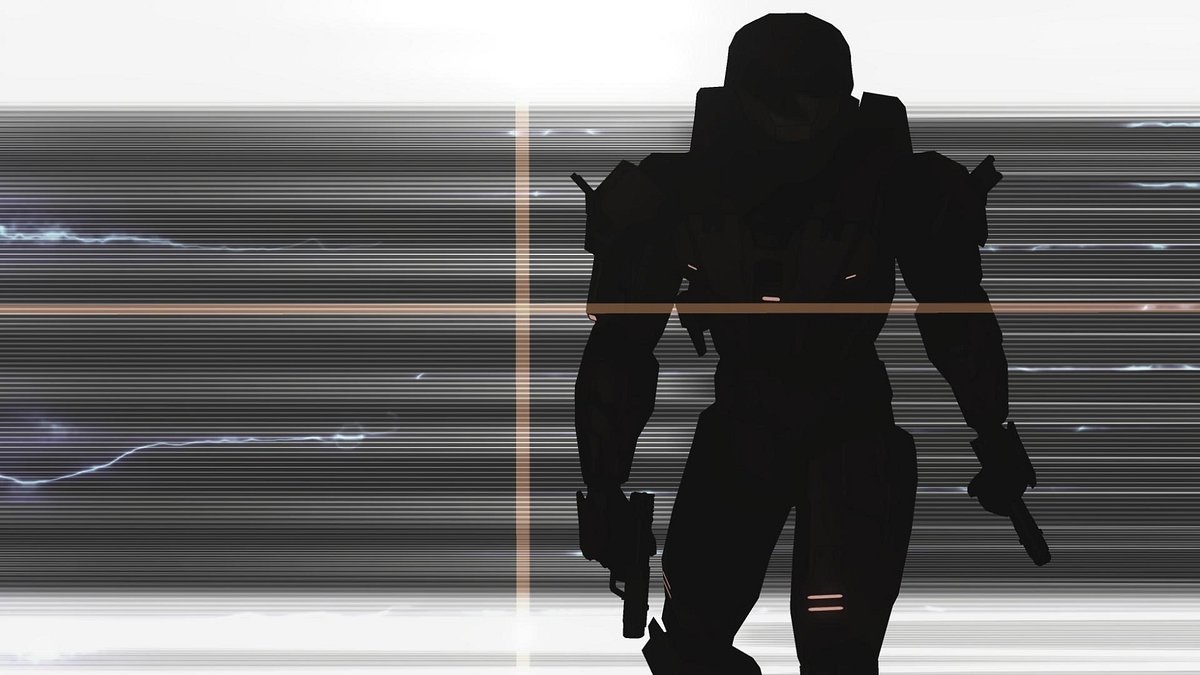
Because I know you’ve got quite a mind for the deeper lore of the Halo universe, what’s your favorite piece of expanded universe media?
During the pandemic, I became obsessed with Halo lore when researching a well-known Forerunner mystery appearing in Halo 3’s level Sandtrap. The Forerunner book trilogy by Greg Bear introduced me (relatively later than most) to the massive universe beyond the games. Sandtrap (and more-so the level Epitaph) are covered in Forerunner glyphs that are undeciphered to this day.
I gravitated towards the Forerunner trilogy, not in hopes of finding a translation, but in hopes of finding a meaning behind the mysterious text. What does the text represent? Why is it on the Ark? Why is it on Zeta Halo?
This silly video-game texture led me to devour an entire trilogy for answers, and I definitely found some head-canon regarding the ancient text, as well as a ton of other awesome Halo lore I didn’t know existed! And then, Kelly Gay is authoring the next Halo novel—Halo: Epitaph...
Either someone is messing with me, or the title is a big coincidence. Either way, I must read it.
Tell us about your journey as a content creator. For a lot of folks out there who might be looking to get started, I think they like to know how you began—what interesting places has it taken you over the years and how do you think your content has evolved?
I began my journey with content creation by making Minecraft creations. Halo 3’s Forge mode introduced me to map making, but Minecraft eventually evolved into something that allowed complete creative freedom. I made hundreds of tutorials involving the building of maps, redstone, and even command blocks—Minecraft’s scripting tool.
I became well known for making “concepts.” Tips and tricks that’d inspire other gamers to make their own creations. I made proof-of-concepts for making games within Minecraft, such as Space Invaders, The Sims, and DayZ. I built an entire explorable city map called “Phobos - Apocalyptic Survival” that added custom survival mechanics using command blocks. It took over a year!
I ended my solo Minecraft journey with an idea called Project Campfire, where I was using command blocks to script a completely original top-down RPG… in Minecraft. After years of creative work I did for fun, that project prompted members of a team partnered with Minecraft to reach out to me and offer me a full-time job scripting Minecraft maps. I left YouTube to focus on my work.
Unfortunately, I came to realize that I was just as passionate about building cool maps as I was about scripting cool mechanics, which led me to pursue content creation independently again after a couple years. During this time, I found my passion for writing and storytelling, as well as video-editing. All of this created the perfect storm in me for when Halo Infinite was officially released.
Coming full circle and returning to Halo is bittersweet.
It’s somewhere I can pursue my passions of building, scripting, writing, editing, theory-crafting, all in one place. And I think my passion is infectious, contributing to any bit of success I’ve found by making content.
Let’s talk Forge. How has it felt to see some of your absolutely sensational creations become almost emblematic of what can be done with this tool?
I’m flattered, but I had a relatively unique history with making games inside of games before Halo Infinite’s Forge became available, so I had a good idea ahead of time of what was possible with the tools being given to the community.
I made it my personal goal to demonstrate what utilizing Forge’s potential could achieve. Even if my projects wouldn't eventually transfer over. That way, when Forge officially released on November 8, the community would at least know that the ceiling for what’s possible is way higher than they might’ve originally thought.
I suspect that the ceiling is far above what even I can reach, and it’ll be months—if not years—before we see any real masterpieces published. “Toy Story” and the rest of my maps thus far are mere concepts that just scratch the surface of this tool.
“Toy Story” was pretty cool though, and I’m flattered that some of the community has been using my maps that are missing in action as a benchmark for quality thus far. The maps I’m building in the newly released Forge Beta aim to be far better than those, and the community (Forge veterans and newbies alike) have been publishing some great maps mere weeks after Forge's release!
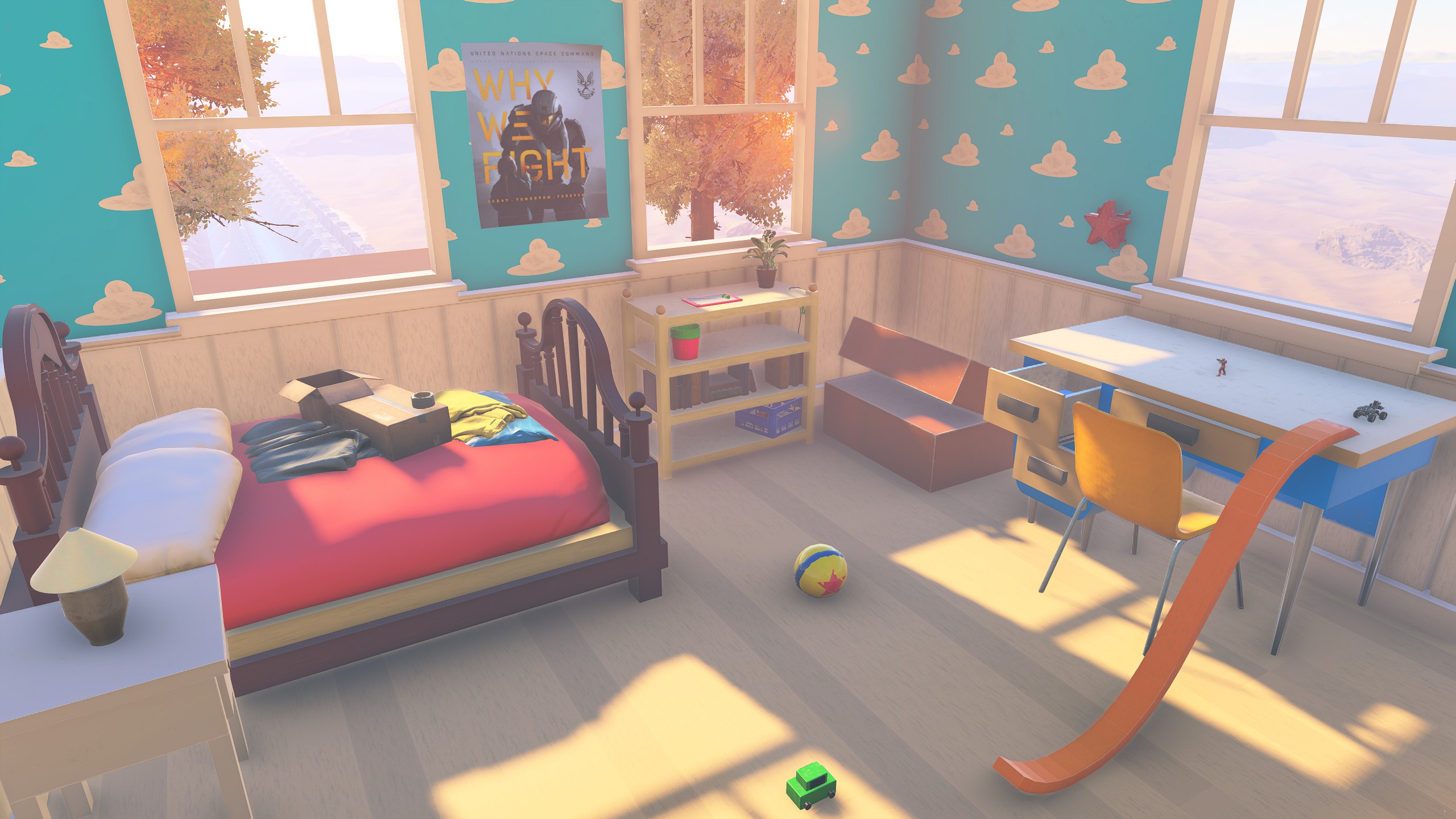
Where do you begin when looking to design a map—whether that’s a functional multiplayer arena or more of an interactive “scene”? Has there been a laundry list of things you’ve wanted to make that you’re now able to tick off?
I start with asking myself, “what would I like?”
Whether it’s an environment, a scripted game mechanic, or a specific art style—I stick to designing what I like. Odds are, someone else likes it too.
I like “shrinking” maps (I made a shrinking map in Minecraft too!), and I felt like building a fun environment rather than sticking to realistic environments from my previous Forge builds. “Toy Story” was a logical solution.
For “Toy Story,” it was a “real” scene I attempted to recreate, rather than one entirely from my own imagination. This made it easy to build because I could use several games and 3D renders from Toy Story fans as reference, but it also made it hard because anything less than building an accurate depiction made me feel like I wasn’t trying hard enough.
Pro-tip: Care less, don’t stay up til’ 3AM… If you’re passionate, you’ll still be passionate tomorrow, just less tired.
But whether I’m recreating a scene, or making an original scene, I block-out the maps to get a sense for scale. Instead of building a fully detailed house, I place a few large cubes to represent the house. This helps define lines of sight for gameplay, as well as routes players may want to take, or avoid. Those definitions then help me design the house’s exterior, or even replace the house with something else entirely.
For example: In “Toy Story,” I knew I needed the floor to have clutter, otherwise the player would be vulnerable in no-man’s land walking across. I placed some cubes that seemed to make the floor less empty and a safer gameplay environment, and eventually replaced those cubes with a fully detailed doll house and a toy castle!
To answer the second part of the question, I had a list of ideas before Forge, but it somehow keeps getting longer after Forge’s release…
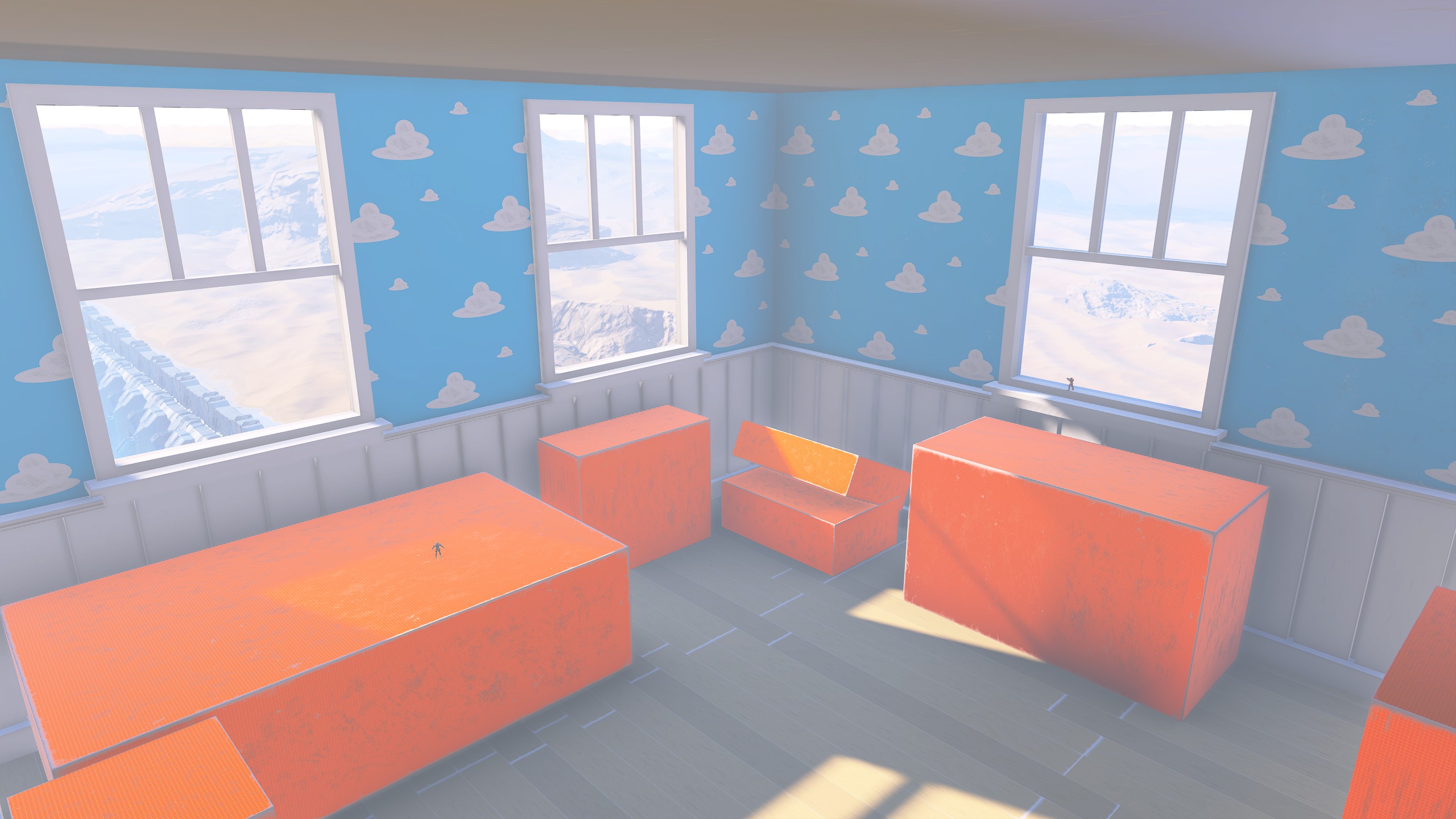
What advice would you give to folks who are maybe interested in trying out Forge but might feel unsure of where to start? What are some of the fundamental things you think those people should know?
My advice would be to watch Forge tutorials and to download other Forgers’ maps to investigate how they were designed.
Most people suggest fiddling around in the tool yourself first, which is an option, but can make bad building habits, or lead you to not leave your comfort zone.
I Forged for over 100 hours before discovering how to weld objects together. I thought the feature was broken, but later realized welded objects need to be set to Dynamic and can’t be rescaled.
If you learn the basics correctly, you’ll have a more enjoyable time Forging!
To that point, you’ve started a really awesome tutorial series—“How to Forge like a PRO in Halo Infinite.” Tell us a bit about that!
Upon launch, it was clear that Forge is an undeniably complicated tool for the average Halo fan. I struggled in the beginning too, and I’ve used random game development software over the years. The reason I struggled was because I went in blind—no tutorials or documentation really existed yet. People like myself have shown what’s possible, but now how it’s possible.
But Forge is actually a really intuitive tool once you learn it! And while most other content creators are focused on using Forge themselves right now (can’t blame them, it’s too much fun), I’ve been helping out the newcomers.
With my experience, I started a Forging tutorial series aimed at players not only looking for how to build, but also how to script. I don’t think I’m the best in either field, but it’s rare to find a content creator who can do both well!
I’ve covered the basics so far, with a focus on demonstrating a hands-on approach that’ll teach players how to add various useful concepts to a map
So far, my tutorials cover placing and adjusting objects and their properties, all the way to scripting functional elevators and doors that automatically detect players nearby! More is planned, including how to build in specific styles, or how to script custom gametypes that’ll make a map unique.
Got any sneak peeks for us on any Forge maps you’re working on?
I’m in the testing phase for several maps, including one that fans of my “Toy Story” map will likely enjoy, but I can’t show that just yet.
A different map I’m starting focuses on another passion I found during the pandemic: Stargate SG-1. For the Stargate nerds out there, I plan on building the SGC for one base, as well as Abydos for another, with the Stargate acting as a chokepoint for a sort of “tug of war” gametype.
Here’s my early prototype for the Stargate:
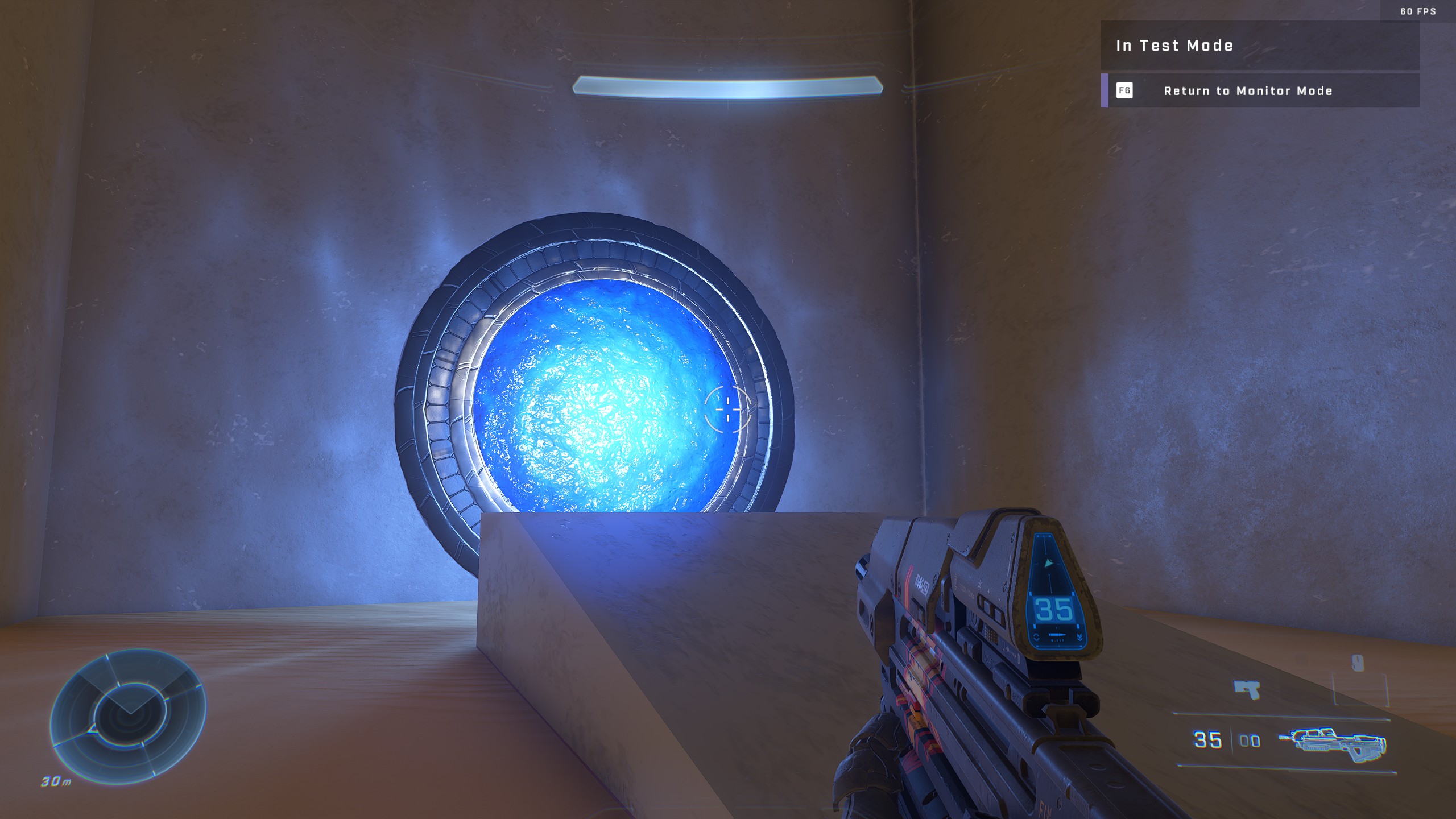
Obviously the Forge Beta in Halo Infinite has brought with it a lot of new and long-requested features, like having an undo button at long last. What are some other things you’d like to see come to Forge as the mode continues to evolve and improve?
Fun fact: the leaked build of Forge would crash if you pressed “undo,” meaning I built ALL of my maps to date without using that feature. As it’s fixed in the official Forge Beta, it’s welcome indeed.
The popular requests for Forge are placeable Campaign AI, or the inclusion of more SFX (voice lines, Halo music) so Forged maps can offer a Campaign-like experience. I’m all for that, but there is one feature that’d truly push Forge over the top for me: Being able to scale dynamic objects.
As things are currently, the toys in my “Toy Story” map were statues made out of re-scaled objects. If I could make those rescaled objects dynamic, they could be welded together, and be given physics, meaning players would be able to interact with the various toys. They’d become less of a set piece, and more of an interactive object that’d completely change the dynamic of how a map like that is played! Imagine a Mr. Potato Head boss fight…
If you could issue a challenge to the community, what’s something you’d like to see people make in Forge?
I’m a sucker for non-traditional experiences. Slayer is fun, but the new scripting tool allows for some really high quality “escape rooms” and such. It’s something I’d love to make, but something I’d love to play even more.
Who are some of the Forgers out there that have inspired you—be it historically throughout the series from Halo 3 to Halo 5, or right now?
My biggest inspirations are the Burger King map built on Halo 3’s Foundry, which inspired me to start getting creative in Forge over a decade ago, and (@thekarmaplex) who I’m working to Forge a Halo Infinite map with right now. He’s extremely talented and has a knack for making “custom models” in Forge that really enhance a build. If you don’t know who he is now, hopefully our first map together will change that!
Thank you very much for your time in joining us—got any parting words?
It was a pleasure! I can’t wait to see what content the community creates, whether that’s with Forge or a different niche entirely. Stay passionate.
Don't forget to check out Red Nomster's YouTube channel, where you'll find his excellent Forge tutorial guides, and follow him on Twitter.



